When considering the total cost of vehicle ownership, it’s easy to focus solely on the sticker price or fuel economy. However, the true expense includes a wide range of factors such as insurance, maintenance, repairs, taxes, depreciation, and fuel costs.
For many drivers, especially those on a budget, owning a car that costs less than $2,000 per year to maintain and operate is an ideal scenario.
These vehicles typically offer excellent reliability, low insurance premiums, affordable parts, and good fuel efficiency, making them practical choices for cost-conscious owners.
On the other hand, some cars can easily double or even triple that annual ownership cost, placing a heavy financial burden on their owners. High repair bills, expensive parts, premium insurance rates, and poor fuel economy all contribute to these increased expenses.
Whether driven by luxury features, complex technology, or inherent reliability issues, these vehicles are often more costly to keep on the road.
Understanding which cars fall into these two categories helps consumers make smarter purchasing decisions and manage their budgets more effectively.
In this article, we’ll explore five vehicles that cost less than $2,000 a year to own and operate, followed by five cars whose ownership costs typically exceed $4,000 annually.
This analysis will shed light on the factors that influence ownership expenses and help you identify the best vehicle choices for your financial goals.
5 Cars That Cost Less Than $2K/Year To Own
Owning a vehicle that costs less than $2,000 annually to maintain and operate is a dream for many drivers, especially those who rely on their cars for daily commuting or family errands. When a vehicle stays affordable over the years, it not only lightens the financial load but also provides peace of mind by avoiding unexpected expenses.
Cars that fall into this category typically have a combination of low insurance rates, excellent fuel efficiency, affordable maintenance and repairs, and a strong track record for reliability.
One major factor in keeping ownership costs down is the vehicle’s reliability. Models with fewer mechanical issues require less frequent repairs and fewer costly part replacements. Additionally, widespread availability of affordable parts and straightforward mechanical design help reduce service costs.
Insurance premiums also play a significant role—vehicles with good safety ratings and low theft rates tend to cost less to insure, further lowering yearly expenses.
Fuel efficiency is another key consideration. Cars that sip rather than gulp gas not only save money at the pump but also tend to have fewer stress-related mechanical failures over time. Many compact and subcompact models excel in this regard, delivering consistent mileage with minimal upkeep.
In this section, we’ll explore five vehicles that consistently rank among the most cost-effective to own, each known for keeping expenses below $2,000 per year on average
. Whether you’re looking for a reliable commuter or a practical family car, these vehicles combine affordability with dependable performance, making them smart choices for budget-conscious buyers and anyone seeking to minimize the total cost of ownership.
1. Toyota Corolla
The Toyota Corolla has long been synonymous with reliability, affordability, and low ownership costs, making it one of the most popular choices for drivers seeking a vehicle that costs less than $2,000 annually to maintain and operate. Its reputation for longevity and minimal repair needs helps keep expenses low over the years.
One key reason the Corolla is so inexpensive to own is its outstanding reliability. Toyota has engineered the Corolla to run smoothly well past 200,000 miles with routine maintenance.
The vehicle rarely suffers from major mechanical failures, which keeps repair bills low. When repairs are needed, parts are widely available and reasonably priced, reducing labor costs and parts expenses.
Insurance rates for the Corolla are also favorable. Because it is a compact, low-performance vehicle with a strong safety record, insurance companies typically offer lower premiums, further reducing overall ownership costs.
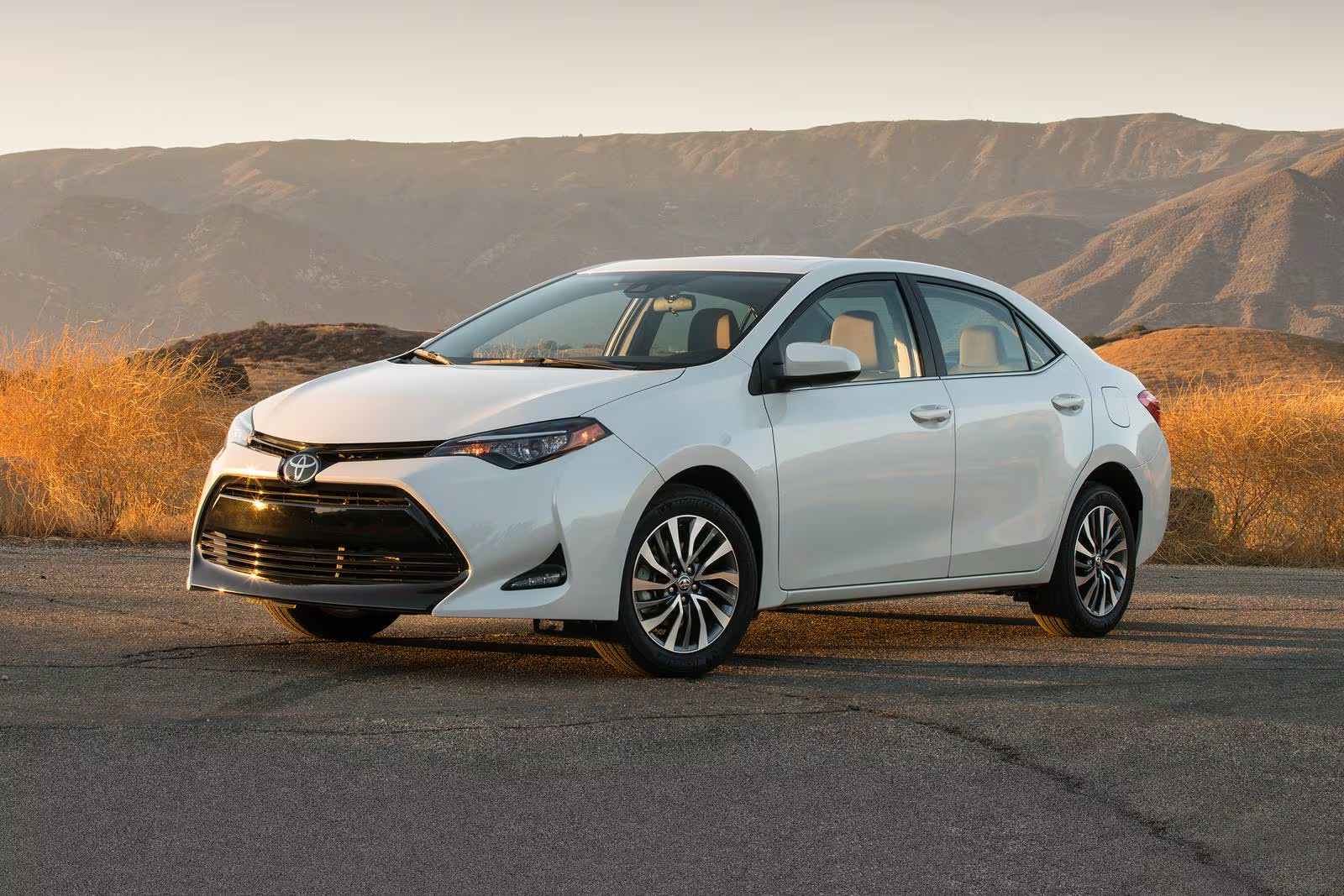
Fuel efficiency is another major factor. The Corolla’s efficient four-cylinder engine delivers excellent gas mileage, often achieving over 30 miles per gallon in combined driving conditions. This not only lowers fuel expenses but also contributes to less wear and tear on engine components over time.
The Corolla’s simple, well-designed mechanical layout makes routine maintenance tasks like oil changes, brake replacements, and tire rotations straightforward and affordable.
Additionally, Toyota’s extensive dealer and independent repair network ensures owners have access to qualified technicians without exorbitant service fees.
Depreciation is moderate compared to many other vehicles in its class, meaning the Corolla holds its value relatively well over time, which is an important aspect when calculating total ownership cost.
In summary, the Toyota Corolla’s combination of bulletproof reliability, economical fuel consumption, low insurance rates, and affordable maintenance makes it a standout choice for drivers aiming to keep their annual vehicle expenses under $2,000.
Whether used as a commuter car or a family sedan, the Corolla’s proven track record helps owners avoid costly surprises and maintain budget-friendly driving.
2. Honda Civic
The Honda Civic is a legendary compact car celebrated for its balance of performance, fuel efficiency, and low maintenance costs, making it an excellent candidate for ownership costs under $2,000 per year. Its reputation for reliability and strong resale value adds to its appeal among budget-conscious drivers.
One major reason the Civic keeps ownership costs low is its proven mechanical durability. With proper maintenance, Civics often run smoothly for over 200,000 miles with minimal repairs.
When service is needed, parts are affordable and abundant thanks to Honda’s extensive network of dealerships and aftermarket suppliers. Routine maintenance tasks like oil changes, brake service, and filter replacements are straightforward and inexpensive.
Insurance premiums for the Civic tend to be reasonable because it is a small, safe, and widely driven vehicle with a low risk profile. Safety features and solid crash test scores further help keep insurance costs down.
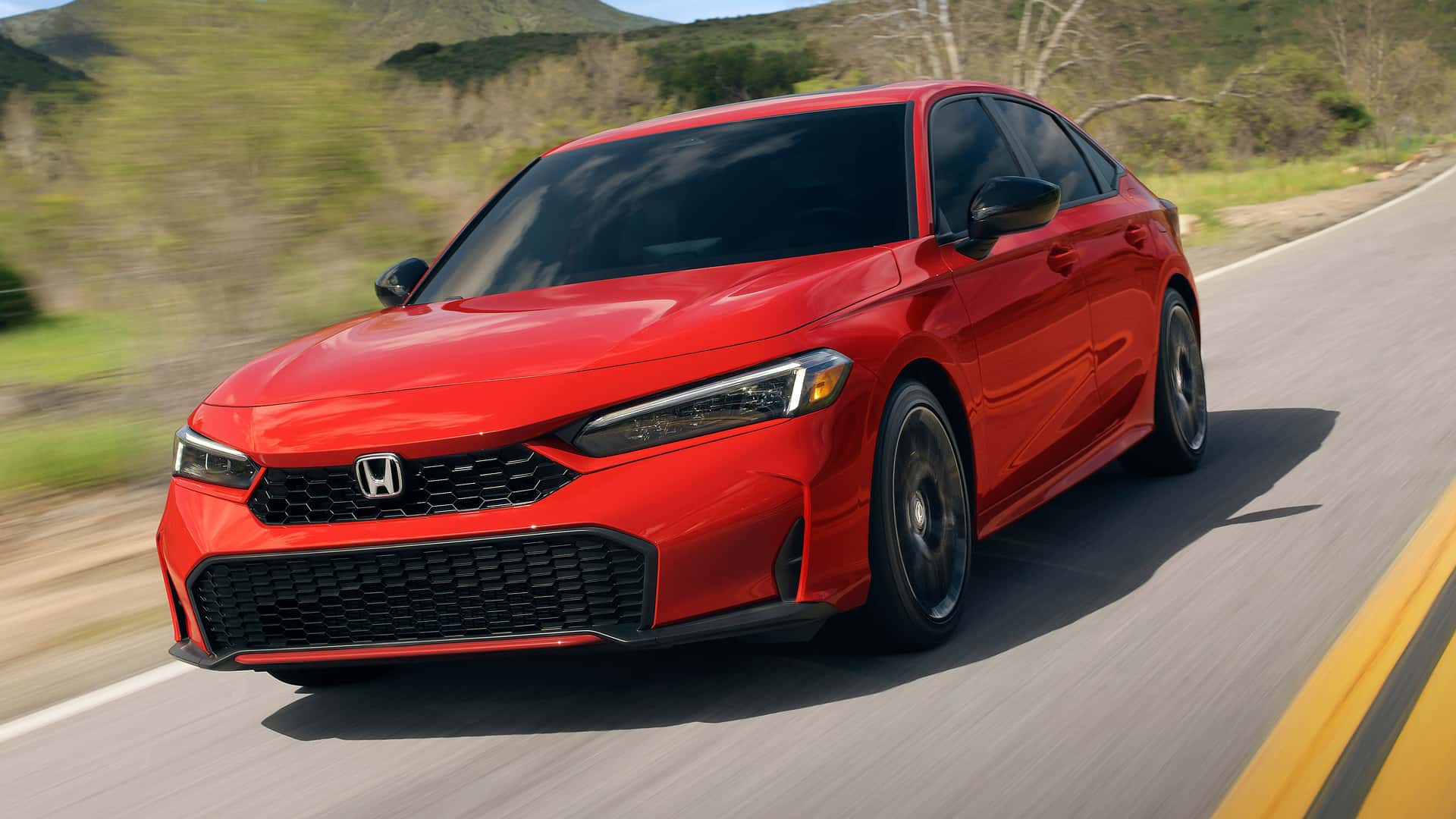
Fuel economy is another highlight. The Civic’s efficient four-cylinder engines typically achieve between 30 to 40 miles per gallon depending on the model year and driving conditions. This means owners spend less on fuel over time, which is a significant portion of total vehicle costs.
Additionally, the Civic’s interior and mechanical simplicity reduce the likelihood of expensive electronic or mechanical failures, a common cost driver in more complex vehicles.
Resale value is strong, helping owners recoup a good portion of their initial investment when they decide to sell or trade in their vehicle. This also contributes indirectly to keeping long-term ownership costs down.
In sum, the Honda Civic’s combination of mechanical reliability, fuel efficiency, affordable parts, and low insurance premiums make it a practical and economical choice for drivers aiming to keep annual ownership costs under $2,000.
3. Mazda3
The Mazda3 is a compact car that offers a winning combination of style, driving enjoyment, and affordability, which extends to its low annual ownership costs. Known for reliability and fuel efficiency, the Mazda3 is a solid choice for those seeking to keep total costs under $2,000 per year.
Mazda has engineered the Mazda3 with a focus on durability. Owners frequently report that these vehicles require minimal repairs outside of standard maintenance for many years. Replacement parts are reasonably priced and widely available, and repair shops are familiar with Mazda models, reducing labor costs.
The Mazda3 also benefits from competitive insurance rates. Being a compact car with good safety ratings, it attracts lower insurance premiums compared to larger or sportier vehicles.
Fuel efficiency is an important factor in the Mazda3’s low operating costs. Depending on the engine and transmission combination, the Mazda3 can average between 28 and 35 miles per gallon combined, helping owners save significantly on fuel expenses over time.
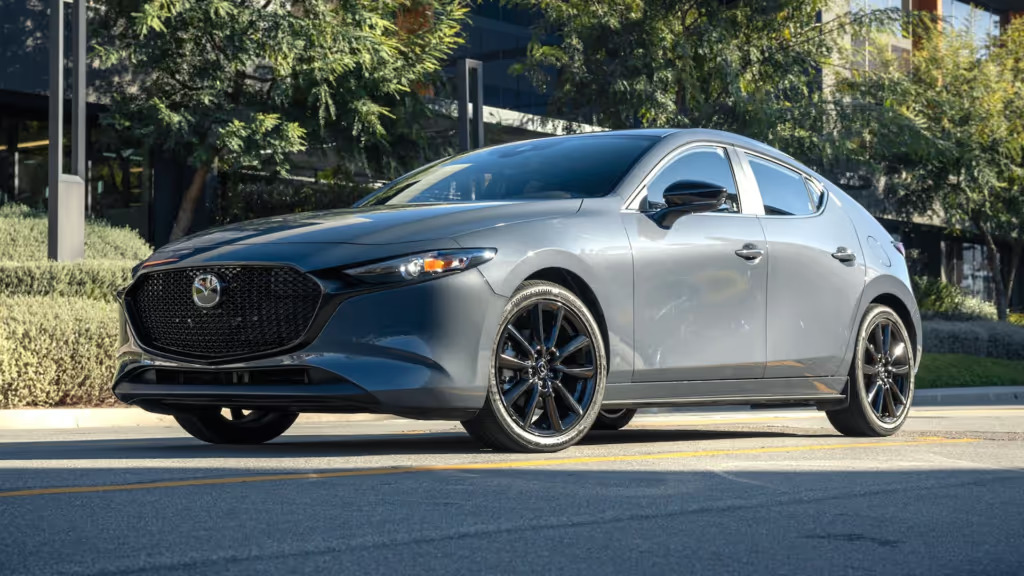
Routine maintenance is straightforward, with common services such as oil changes, brake servicing, and tire rotations being affordable and easy to perform. The car’s simple engineering avoids costly surprises related to complex technology.
While depreciation affects all vehicles, the Mazda3 retains a fair portion of its value in the compact segment, which helps lower the total cost of ownership.
Overall, the Mazda3 delivers a balanced ownership experience by combining style and fun with low ongoing expenses, making it a great choice for budget-conscious drivers.
4. Hyundai Elantra
The Hyundai Elantra is a compact sedan that has grown in popularity due to its affordable pricing, strong warranty coverage, and low cost of ownership, frequently under $2,000 per year. Hyundai’s focus on value and reliability makes the Elantra a sensible option for drivers looking to minimize expenses.
One of the main factors driving the Elantra’s low ownership costs is Hyundai’s comprehensive warranty program, often including a 10-year/100,000-mile powertrain warranty. This coverage significantly reduces the risk of costly repairs during the early years of ownership.
In terms of maintenance, the Elantra requires typical servicing such as oil changes, brake work, and tire replacements, all of which are priced competitively in the market. Repair parts are readily available and affordable, thanks to Hyundai’s expanding global footprint.
Fuel economy is another strength of the Elantra. Models equipped with the base four-cylinder engines often deliver between 28 and 33 miles per gallon combined, lowering fuel expenses and reducing overall costs.
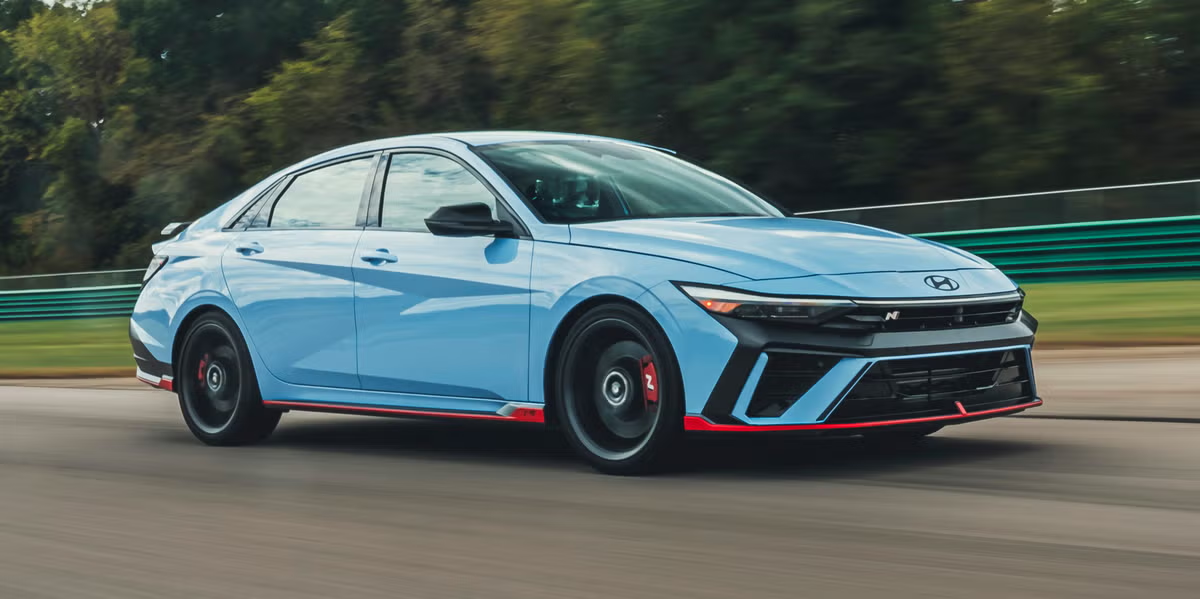
Insurance premiums for the Elantra are generally moderate. The vehicle’s solid safety ratings, combined with its classification as a compact sedan, help keep insurance rates competitive.
Depreciation is reasonable for the segment, and the car holds its value well compared to many rivals, which helps owners when they eventually sell or trade in the vehicle.
In conclusion, the Hyundai Elantra’s blend of warranty protection, fuel efficiency, affordable maintenance, and reasonable insurance costs combine to create a vehicle that is consistently inexpensive to own and operate year after year.
5. Ford Fiesta
The Ford Fiesta stands out as an economical and practical subcompact car that consistently costs less than $2,000 per year to own.
Its combination of fuel efficiency, affordable maintenance, and relatively low insurance premiums make it a great choice for budget-conscious drivers seeking dependable transportation without breaking the bank.
A key reason the Fiesta remains inexpensive to own is its solid reliability record. While not as legendary as some Japanese competitors, the Fiesta’s engineering ensures fewer major repairs, especially when owners keep up with regular maintenance schedules.
Basic repairs and part replacements are generally affordable, partly due to the car’s widespread popularity and the availability of parts through Ford’s extensive dealer network and aftermarket suppliers.
Fuel economy is one of the Fiesta’s biggest advantages. Models with the standard four-cylinder engine typically achieve between 28 and 35 miles per gallon in combined driving, which translates to significant savings on fuel over the life of the car.
For many owners, this efficiency helps keep annual operating costs well below the $2,000 mark.
Insurance costs for the Fiesta are typically moderate, especially for younger drivers or first-time car owners who often find subcompact cars easier and cheaper to insure. Its small size and decent safety ratings contribute to these favorable insurance rates.

Maintenance tasks such as oil changes, brake service, and tire replacements are straightforward and affordable on the Fiesta, as with many smaller cars. Its relatively simple mechanical layout means fewer expensive complications compared to more complex vehicles.
The Ford Fiesta’s depreciation is fairly typical for its class but does not significantly impact the overall cost of ownership because of the low day-to-day expenses. Its value retention is decent, especially for models with lower mileage and proper upkeep.
Overall, the Ford Fiesta offers an attractive balance of low ownership costs, fuel efficiency, and ease of maintenance, making it a standout among affordable vehicles that keep annual expenses under $2,000. Whether used as a first car or economical commuter, it delivers reliable performance without a heavy financial burden.
5 Cars That Cost More Than $4K/Year To Own
While some vehicles impress with their affordability and low upkeep, others demand a significantly higher financial commitment, often costing more than $4,000 annually to own and operate.
These cars tend to carry higher expenses in areas like insurance, maintenance, repairs, fuel consumption, and depreciation.
Owning such vehicles can be a rewarding experience in terms of luxury, performance, or prestige, but it often comes with a steep price tag that not all drivers are prepared for.
High insurance premiums are common among luxury and sports cars due to their greater risk of theft, expensive replacement parts, and higher likelihood of costly repairs.
Maintenance and repair costs are also typically higher because these vehicles use specialized components, advanced technology, and often require certified technicians. Even routine upkeep such as oil changes and brake services can come at a premium.
Fuel economy is another factor that drives up ownership costs. Powerful engines with larger displacements or turbocharging may deliver thrilling performance but often consume more fuel, increasing annual operating expenses.
Additionally, depreciation can hit hard in certain segments, especially for models with rapid value loss or those requiring costly parts replacements.
In this section, we’ll explore five vehicles known for their high ownership costs, where the yearly expenditure often doubles or more compared to budget-friendly models.
Whether driven by luxury features, complex engineering, or high-performance demands, these cars exemplify how owning a certain vehicle can significantly impact your wallet.
Understanding the factors behind these costs is crucial for prospective buyers to make informed decisions and avoid unexpected financial burdens.
1. BMW 5 Series
The BMW 5 Series is a luxury midsize sedan renowned for its blend of performance, comfort, and cutting-edge technology. However, owning a 5 Series often comes with a steep price tag, frequently exceeding $4,000 annually in total ownership costs.
While the driving experience is undeniably rewarding, the expenses behind the wheel can add up quickly, making it a vehicle better suited for those with deeper pockets.
One of the primary factors driving up the cost of owning a BMW 5 Series is maintenance and repair expenses.
German engineering, while sophisticated, relies on specialized parts and highly trained technicians, resulting in higher labor costs at dealerships or independent shops familiar with BMW vehicles.
Routine maintenance items such as oil changes, brake pads, and filters tend to cost significantly more than their counterparts on economy cars.
Additionally, the 5 Series’ advanced electronic systems, suspension components, and turbocharged engines can lead to expensive repairs, especially as the car ages.
Insurance premiums for the BMW 5 Series are also elevated compared to average sedans. Due to its status as a luxury performance vehicle, it carries higher theft risk and replacement costs, which insurers factor into premium calculations. This means owners often pay more yearly just to insure their vehicle.
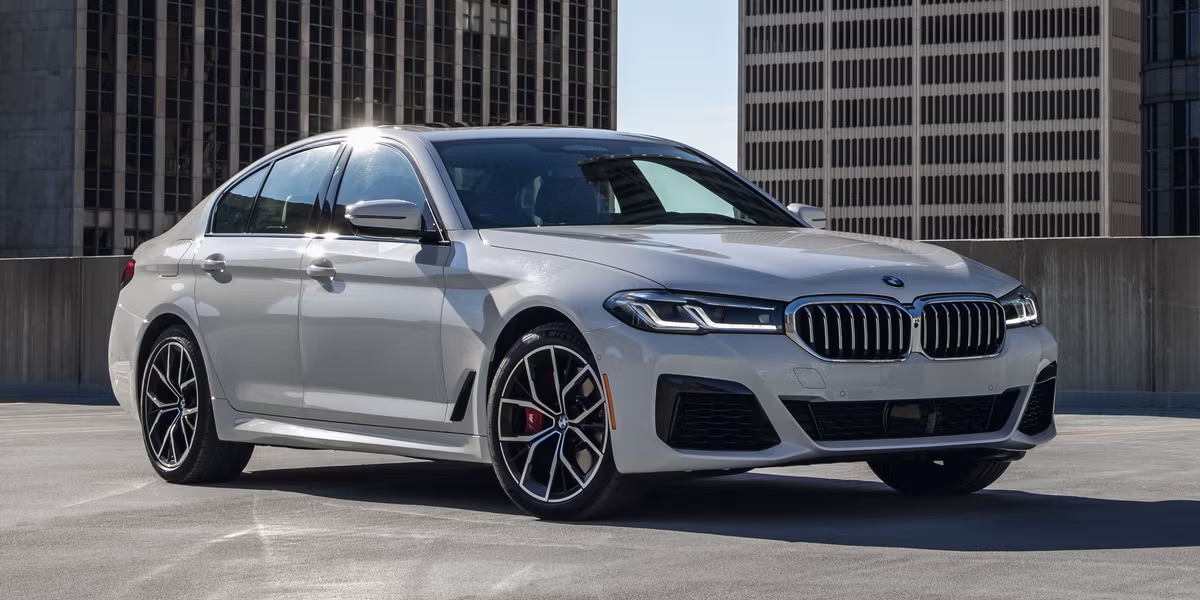
Fuel economy in the 5 Series varies depending on the engine but generally ranges from 20 to 30 miles per gallon combined, which is reasonable for the segment but still leads to higher fuel expenses compared to more fuel-efficient cars. The cost of premium fuel required by many BMW engines adds to this expense.
Depreciation is another significant cost factor. Luxury vehicles like the 5 Series can lose a substantial percentage of their value in the first few years, though well-maintained examples retain value better. This depreciation impacts the overall cost of ownership, especially if the vehicle is financed or leased.
In summary, the BMW 5 Series delivers exceptional driving dynamics and luxury features but demands a higher financial commitment.
Maintenance, repairs, insurance, fuel, and depreciation all contribute to pushing annual ownership costs above $4,000, making it important for prospective buyers to budget accordingly.
2. Audi A6
The Audi A6 is a luxury midsize sedan that combines elegant design, advanced technology, and strong performance. However, owning an A6 comes with a price, and annual costs often exceed $4,000 due to several factors tied to maintenance, insurance, fuel, and depreciation.
One of the primary contributors to the Audi A6’s high ownership costs is maintenance and repair expenses.
Audi vehicles are known for their sophisticated engineering and advanced electronics, which, while impressive, can be costly to service. Routine maintenance, such as oil changes and brake work, tends to be more expensive compared to mainstream vehicles.
Furthermore, repairs involving the A6’s complex all-wheel-drive system (Quattro), turbocharged engines, or infotainment components can quickly escalate bills. Finding qualified mechanics for these specialized systems is essential but can lead to higher labor costs.
Insurance premiums for the Audi A6 are notably higher than average. Its classification as a luxury performance sedan, combined with a higher risk of theft and costly repairs, drives up insurance rates. Drivers can expect to pay more annually for coverage than they would for economy or mid-tier vehicles.
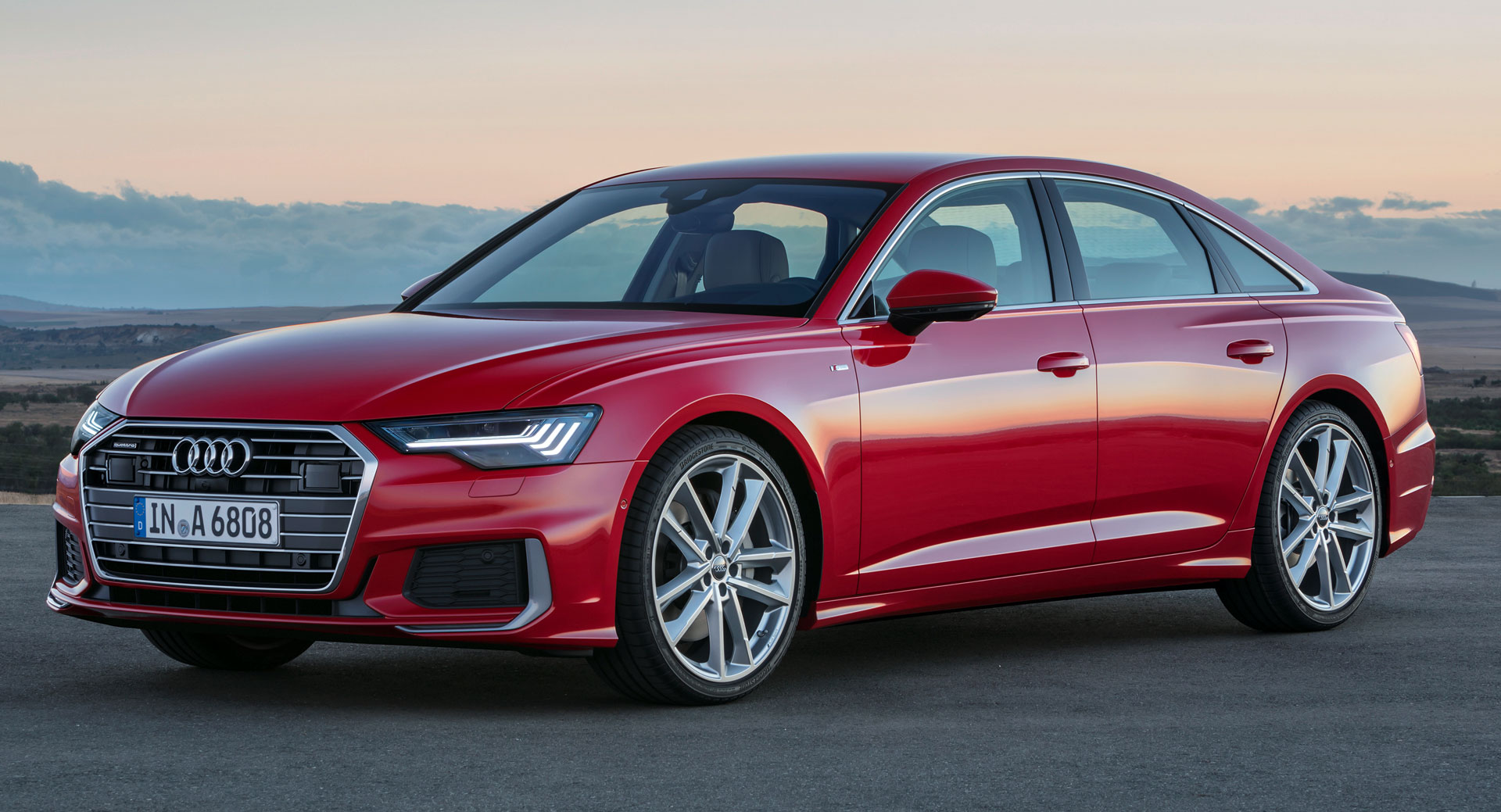
Fuel costs are another factor impacting ownership expenses. While the A6 offers respectable fuel economy for its class—typically around 22-28 miles per gallon combined—its premium gasoline requirement adds to the cost. Aggressive driving or urban commuting can further reduce fuel efficiency, driving up annual fuel expenses.
Depreciation also weighs heavily on the A6’s total cost of ownership. Luxury sedans like the Audi A6 tend to experience rapid value loss within the first five years, which can affect resale or trade-in values significantly. This factor should be considered when purchasing or leasing the vehicle.
Despite the higher costs, the Audi A6 delivers exceptional comfort, cutting-edge features, and strong performance.
However, prospective buyers should be aware that its operating expenses, including maintenance, insurance, fuel, and depreciation, typically push yearly ownership costs beyond the $4,000 mark.
3. Land Rover Range Rover
The Land Rover Range Rover is an iconic luxury SUV known for its commanding presence, off-road capability, and sumptuous interior.
However, owning a Range Rover is a costly endeavor, with annual expenses often surpassing $4,000. These high ownership costs stem primarily from expensive maintenance, steep depreciation, insurance, and fuel consumption.
Maintenance and repair costs are among the most significant contributors to the Range Rover’s high ownership price.
The vehicle’s complex air suspension, sophisticated electronics, and powerful engines require specialized knowledge and parts, which can be costly to source and replace.
Routine services such as brake repairs, oil changes, and tire replacements are pricier than those for mainstream SUVs, and unexpected repairs can run into thousands of dollars.
The rarity of some replacement parts and the need for certified Land Rover technicians contribute to elevated labor costs.
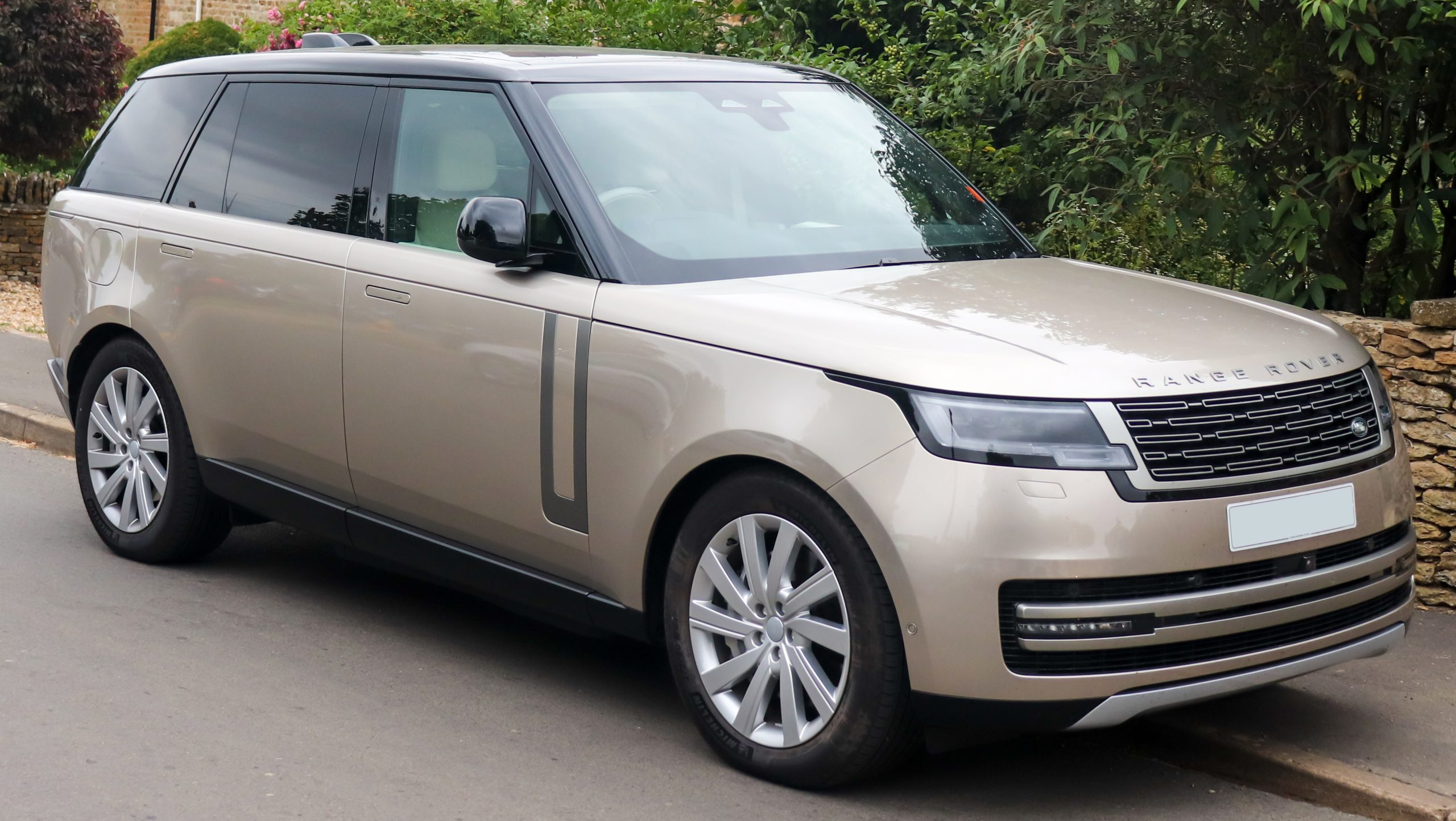
Insurance premiums for the Range Rover are also high due to its luxury status, high value, and the expensive nature of repairs. Insurers consider it a higher risk, resulting in elevated yearly premiums that add significantly to the total ownership cost.
Fuel economy is another cost driver. Despite improvements in newer models, Range Rovers generally achieve between 15 and 22 miles per gallon, which means owners face frequent trips to the pump and higher fuel bills. The use of premium gasoline further inflates this expense.
Depreciation is steep for the Range Rover, particularly during the first five years of ownership. The vehicle’s luxury SUV segment tends to experience rapid value loss, especially given the maintenance costs and reliability perceptions. This depreciation impacts resale and trade-in values, affecting the overall cost picture.
While the Range Rover offers unparalleled luxury, technology, and off-road prowess, its annual costs of ownership make it a vehicle suited to owners prepared for significant financial outlay. Maintenance, insurance, fuel, and depreciation collectively push yearly costs well beyond $4,000.
4. Mercedes-Benz E-Class
The Mercedes-Benz E-Class has long been a benchmark for luxury midsize sedans, offering a blend of refined performance, state-of-the-art technology, and upscale comfort.
However, owning an E-Class frequently entails annual costs exceeding $4,000, driven by expensive maintenance, insurance, fuel consumption, and depreciation.
Maintenance and repair costs are a significant factor in the E-Class’s high ownership expense. Mercedes vehicles are equipped with advanced engineering and intricate electronics, making routine maintenance pricier than many other cars.
Scheduled services, such as oil changes, brake jobs, and tire rotations, come at a premium, and unexpected repairs, particularly for air suspension systems, turbochargers, or advanced safety features, can be costly.
Labor costs at authorized Mercedes dealerships or specialists tend to be high, reflecting the complexity of the vehicle.
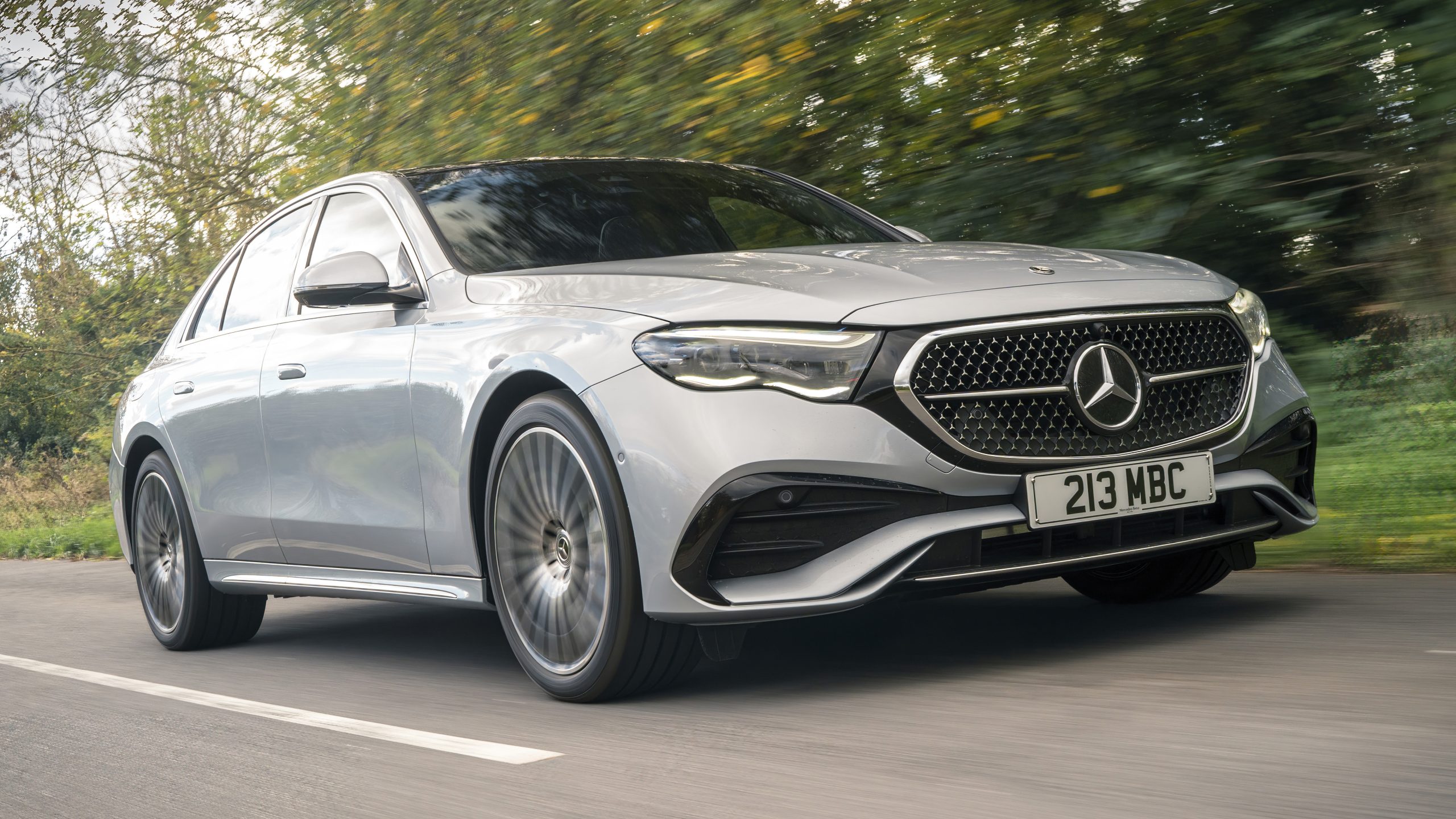
Insurance premiums for the E-Class are typically above average due to its luxury status, higher replacement values, and costlier repairs. Insurers see it as a higher-risk vehicle, resulting in elevated premiums that contribute substantially to annual ownership costs.
Fuel economy for the E-Class varies depending on engine size and configuration but generally ranges between 20 and 27 miles per gallon combined.
While respectable for a luxury sedan, these figures mean fuel expenses add up, especially given that most E-Class models require premium gasoline, increasing the fuel budget further.
Depreciation is another critical factor affecting total cost of ownership. Luxury sedans like the E-Class experience considerable value loss in their first five years, reducing resale value and increasing the overall financial commitment for owners.
In conclusion, the Mercedes-Benz E-Class delivers exceptional luxury and performance, but its upkeep is expensive. Buyers should anticipate annual ownership costs that routinely exceed $4,000 due to costly maintenance, insurance, fuel, and depreciation.
5. Tesla Model S
The Tesla Model S is a pioneering electric luxury sedan that combines cutting-edge technology, impressive performance, and a distinctive driving experience.
However, despite the absence of traditional gasoline expenses, owning a Model S often results in annual costs exceeding $4,000 due to various factors including maintenance, repairs, insurance, and depreciation.
While electric vehicles generally benefit from lower routine maintenance compared to combustion engines—no oil changes or exhaust system repairs—the Model S presents unique challenges that can increase ownership costs.
The complexity of its battery pack, electric motors, and advanced software systems means repairs or replacements, when necessary, can be expensive. Tesla’s service network is still growing, and some repairs require specialized knowledge and parts, leading to costly service visits.
Insurance premiums for the Model S tend to be high. Its status as a luxury electric vehicle with expensive components, combined with high repair costs after collisions, contributes to elevated insurance rates. In some regions, insuring a Model S can rival or exceed premiums for traditional luxury cars.

Depreciation is another significant cost factor. While Teslas retain value better than many other electric vehicles due to strong demand and brand loyalty, the Model S still experiences considerable depreciation, especially as newer models with upgraded technology enter the market. Battery degradation concerns, although limited, can also impact resale value.
Additionally, while fuel costs are lower, the cost of electricity for fast charging and home charging infrastructure investments can add to the total annual ownership cost. Furthermore, any repairs related to the advanced autopilot system or touchscreen controls can be expensive.
In summary, the Tesla Model S offers an innovative and thrilling electric driving experience but comes with higher than expected ownership costs.
Maintenance complexities, insurance premiums, depreciation, and charging-related expenses combine to push yearly costs beyond $4,000, requiring prospective owners to plan their budgets accordingly.
Understanding the true cost of owning a vehicle is essential for making informed decisions, whether you are buying your first car or upgrading to a luxury model.
In this discussion, we explored two ends of the ownership cost spectrum: five cars that typically cost less than $2,000 per year to own, and five vehicles where annual expenses often exceed $4,000.
This contrast highlights how vastly different the financial responsibilities can be depending on the make, model, and class of a vehicle.
Cars that cost less than $2,000 annually generally provide excellent value, combining reliability, affordable maintenance, and low insurance and fuel expenses.
Models like the Toyota Corolla and Honda Fit showcase how efficient engineering and widespread availability of parts can keep costs manageable. These vehicles are ideal for budget-conscious drivers who prioritize practicality and minimal ownership headaches.
On the other hand, luxury and performance vehicles such as the BMW 5 Series, Audi A6, Land Rover Range Rover, Mercedes-Benz E-Class, and Tesla Model S offer an elevated driving experience, advanced technology, and prestige but require a substantially larger financial commitment.
High costs in maintenance, insurance, fuel or charging, and rapid depreciation contribute to ownership expenses that often double or even triple those of economy cars. These factors can surprise buyers who are drawn in by the allure of luxury without fully anticipating the ongoing costs.
Ultimately, the choice between these types of vehicles depends on personal priorities and financial readiness. Low-cost cars offer peace of mind and predictability, while high-end models provide comfort and performance but demand careful budgeting.
Prospective owners should thoroughly research total cost of ownership—including insurance quotes, expected maintenance, and fuel or energy costs—to avoid unpleasant surprises.
By understanding these cost dynamics, drivers can select vehicles that fit their lifestyles and budgets, balancing desires with financial realities for a satisfying ownership experience.
Also Read: 5 Cars That Throw Random Check Engine Codes And 5 That Are Code-Clean

